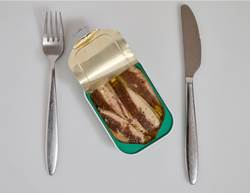So it may be that having strong bones can help cut cravings and protect our waistline. Our bones produce a hormone called osteocalcin, made when your cells build and strengthen bones. “One of osteocalcin’s functions is to increase insulin production, which in turn, reduces blood glucose levels,” says professor Mathieu Ferron, who has spent the last decade studying this hormone at the University of Montreal. “It can also protect against weight gain by increasing your metabolism.”
In breakthrough research, Ferron’s team have recently discovered another enzyme in bone cells called furin, which activates osteocalcin causing it to release into the bloodstream. “In future work, we hope to determine whether furin interacts with another protein involved in appetite regulation,” he explains.
And there’s the added bonus of osteocalcin increasing muscle performance.
Stronger bones, healthier muscles and a smaller waistline? Yes, please! You can boost osteocalcin, by hitting the gym or pavement. “In post and peri-menopausal women, exercise – particularly resistance exercise using small weights – is an effective way to increase osteocalcin levels,” says Dr Tara Brennan-Speranza, senior lecturer in the Department of Physiology at the University of Sydney.
(For more exercise routines and tips on staying healthy check out the April/May issue of Prevention)








.jpg&h=193&w=250&c=1&s=1)

